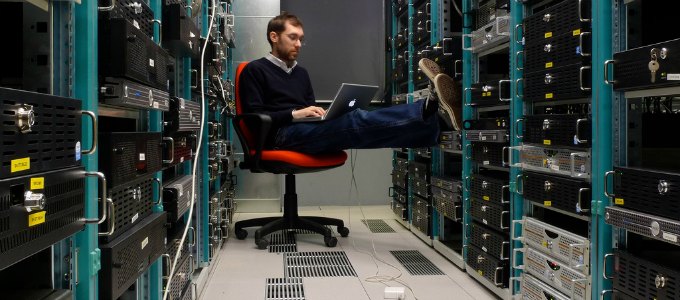
By focusing on only full-time employees, talent managers overlook the talent platforms where workplace advances happen first.
by John Boudreau
June 26, 2015
The largest private-sector employer in the world is Wal-Mart Stores Inc., with 2.2 million employees, and there are only a handful of companies with more than 700,000 employees. That is, if you count only regular full-time employees.
Appirio, the parent company of TopCoder, has 700 employees, yet it delivers more than 700,000 “community members” working on more than 1,500 projects through its “cloud solutions.”
But does “working” at Appirio mean being one of its 700 regular full-time employees, or participating in Appirio’s cloud-based design projects? Is it more important to Appirio to be the best place to work for 700 employees, or the best place to work for 700,000 nonemployees that Appirio connects with its clients?
The leaders of organizations that provide talent platforms like TopCoder, Elance-oDesk and Tongal pay close attention to engaging the free agent workforce. The videos of the “TopCoder Open” show an engaged group of coders gathered in one place to spend hours watching the best coders in the world solve thorny riddles.
Tongal, meanwhile, stages an annual award ceremony called the “Tongies,” which features the best work by the free agents on the Tongal platform. Awards include the best 140-character idea. The speeches by the winners frequently thank Tongal for “giving me a way to pursue my career.” Most employers would dearly love to have their own regular full-time employees be so engaged.
Some talent managers may think, “That’s Tongal or Appirio, but it doesn’t affect me.”
Perhaps it’s not so simple.
Suppose you tap Appirio’s network for design or advertising work, or to develop software applications for your company. Does it matter if those freelance workers find your company and its projects attractive and motivating? Does it benefit you to try to be a best place to work for those freelancers, not only for your regular full-time employees?
Some of the world’s top programmers work only through Appirio, and they freely choose on what projects they work.
Appirio workers tell each other about how interesting your projects are and about how regular employees related to them when they worked together on virtual teams. Appirio’s talent chooses your company just as much as you choose them.
What makes your organization the choice of top freelancers?
Consider the Bill and Melinda Gates Foundation or Robert Redford’s Sundance Film Festival. The 2015 Tongie awards ceremony featured winning projects for the Gates Foundation and were also featured at Sundance. Tongal producers said how thrilled they were to have contributed to the mission and vision of heroes like Bill and Melinda Gates and Robert Redford.
Leadership increasingly means engaging workers on platforms like Appirio, as well as your own employees. If you focus on engaging your regular full-time employees only, you overlook a significant part of your workforce and the talent platforms where workplace advances happen first.
Even if your organization is not a client of talent platforms, workers will be affected by the way such platforms design work, organization and rewards. You’d probably be surprised how many of your regular employees have close colleagues who do their work through a talent platform.
Your regular employees may even take on talent platform projects in their off-hours, or volunteer for Web contests. At the very least, your employees are reading columns like this one or the testimonials of successful free agents doing projects at TopCoder, Appirio or others.
Employees also know about the excitement of contests, the global community among free agents in their fields and the reputation the best of those free agents receives for their work.
Leaders must be as engaging with workers outside your organization as they are with the regular full-time employees inside the organization. They must learn lessons about how to engage workers from outside platforms as well as translating those lessons and applying them to regular full-time employees.
What happens when you shift your thinking to “worker engagement?” It becomes boundaryless. It reaches outside your organization. It invites talent managers to start thinking beyond an engagement survey of regular employees and instead to be the destination of choice for an ecosystem of talent.



